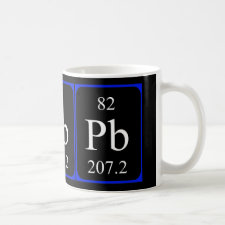
Authors: Vardini MT, Azar AS, Mohammadian A, Shahverdizadeh GH
Publication date: 2011
Article title: Synthesis and Application of an Ion Imprinted Polymer Material for Preconcentration and Determination of Traces of Pb2+ Ions.
Alternative URL: http://icc2011.ir/Docs/B.pdf
Conference information: Abstracts, 15th Iranian Chemistry Congress
Abstract: Lead is present in various products (e.g. pipes, ammunition, solder, paint, petrol). The major source of lead in the environment is the use of lead as a petrol additive. Atmospheric pollution by lead has caused considerable concern in the past and many countries have phased-out the use of lead in petrol. However, lead already in the environment is cycled through the biogeochemical cycle, and lead originally released into the atmosphere has ended up in surface and ground waters. Lead can cause damage to the nervous system and the kidneys and is a suspected carcinogen. Lead in the environment is generally present as inorganic Pb2+ [1]. Lead ion imprinted polymers were synthesized by formation of complexes of lead ion with an aromatic dicarboxylicacid (DA) following copolymerizing with methacrylicacid (MA) as functional monomer and ethyleneglycoldimethacrylate (EGDMA) as cross-linking monomer using 2, 2'-azobisisobutyronitrile (AIBN) as initiator. Control polymers were prepared under identical conditions without the use of Pb2+ imprint ion. The synthesized polymers were characterized by IR spectroscopy, X-ray diffraction and thermal analysis techniques. Then various parameters that affect the preconcentration were optimized in both batch and column methods. The percent enrichment and retention capacity of prepared polymer with optimum constituents was investigated. The proposed polymer was tested for preconcentration of lead ion from ground water and other water samples [2, 3]
Template and target information: lead ion, Pb(II)



Join the Society for Molecular Imprinting

New items RSS feed
Sign-up for e-mail updates:
Choose between receiving an occasional newsletter or more frequent e-mail alerts.
Click here to go to the sign-up page.
Is your name elemental or peptidic? Enter your name and find out by clicking either of the buttons below!
Other products you may like:
 MIPdatabase
MIPdatabase









